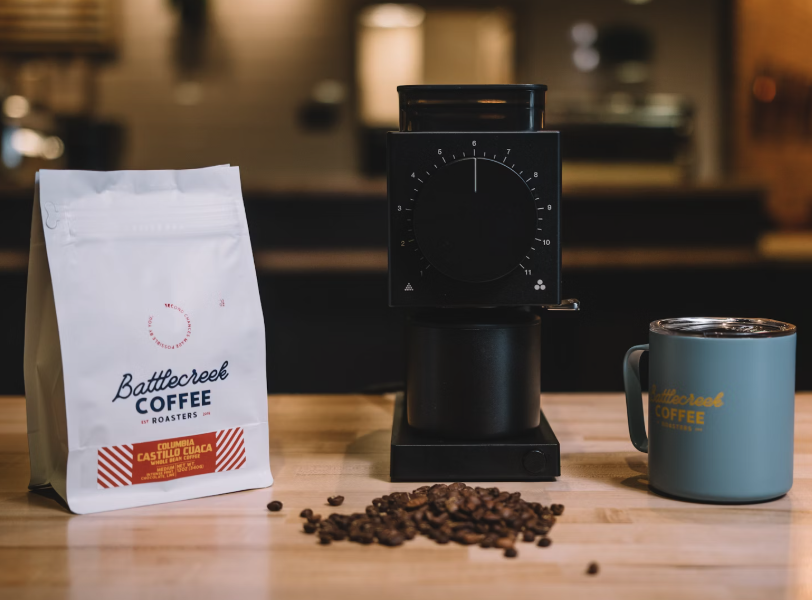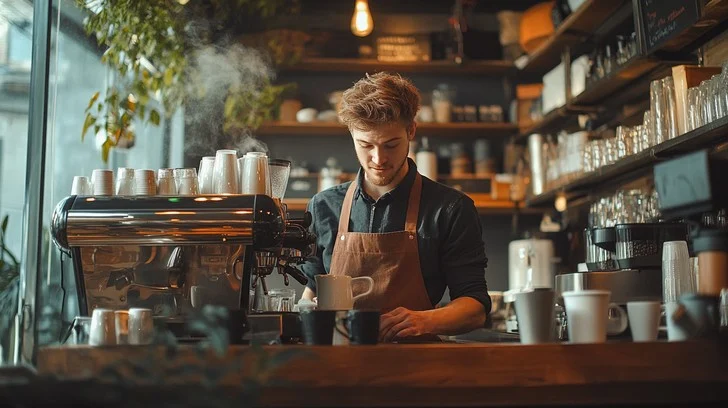In the world of specialty coffee, packaging is far more than a technical necessity, and it’s a quiet but persistent storyteller. While materials, barrier strength, and visual branding often get the spotlight, one often-overlooked feature can shape customer experience and even affect perceived product quality: how the bag opens and closes.
Among roasters, especially those navigating retail shelves or expanding e-commerce, resealable coffee pouches have become standard. But the choice between zipper closures and tin ties is not a cosmetic one. It speaks directly to how your customers interact with your brand, how long your coffee stays fresh after opening, and how your packaging supports your overall business model.
Let’s take a closer look at these two sealing systems, and why choosing the right one matters more than it may seem.
When Form Meets Ritual: Why Seals Are a Strategic Choice
If you’re a roaster packaging whole beans or ground coffee for retail or DTC, chances are freshness isn’t just a quality concern, it’s part of your promise. Resealable closures allow customers to preserve flavor and aroma after opening. But they also do something subtler: they create a daily ritual around your product.
A zipper offers a smooth, tactile closure which you press and hear the track click, reinforcing a sense of precision. A tin tie, by contrast, involves a small fold-and-tuck gesture that feels familiar, even nostalgic. One gives a sense of engineered functionality; the other evokes small-batch craftsmanship.
What seems like a mechanical feature is actually an experience. And that experience gets repeated every day a customer uses your coffee.
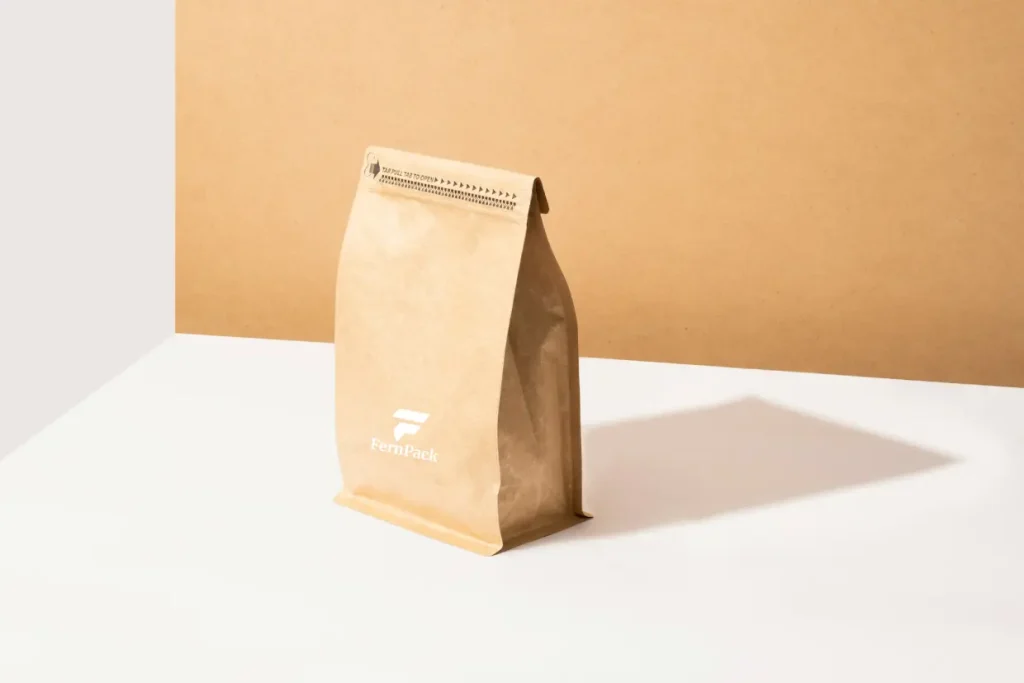
More than aesthetics: Brand image in practice
A coffee pouch is more than just a container, it’s the first tactile and visual interaction your customer has with your brand. The type of resealable closure you choose can subtly shape how your coffee is perceived, remembered, and even recommended.
Zipper closures, especially those with smooth track-and-click feedback, offer a sense of modernity and reliability. Customers who brew coffee over several days or weeks often associate zippers with better freshness, ease of use, and attention to detail. The action of resealing the pouch becomes part of their ritual, and by extension, their impression of your brand.
But the experience isn’t always about convenience or precision. Some roasters intentionally choose tin tie closures to tap into a sense of tradition and nostalgia. The physical act of folding the bag and pressing down the tie can evoke memories of small-batch, handcrafted coffee from local roasteries. For brands rooted in heritage, simplicity, or a farmhouse aesthetic, tin ties are not a compromise, they’re a deliberate part of the storytelling.
What your customers feel when interacting with the bag often matters just as much as how the coffee tastes. Whether you aim for sleek sophistication or rustic charm, the closure you choose helps your packaging speak, even before the first brew.
Preservation and performance: Not all seals protect equally
When it comes to preserving coffee freshness, not all resealable closures perform at the same level. While both zippers and tin ties aim to extend the life of coffee after opening, their technical effectiveness differs significantly. These differences can shape how your coffee is perceived, especially in retail or long-cycle consumption scenarios.
Tin ties provide a basic level of resealability. They allow consumers to fold down the top of the bag and apply mild pressure to keep it closed. While this can slow oxygen ingress and moisture exposure, the barrier is minimal compared to more advanced options. For high-turnover environments, like cafés or offices, this is often sufficient. But in consumer retail, where a bag might be opened and closed over weeks, the limitations become more evident.
Zipper closures, by contrast, form a more robust physical barrier. They prevent air, moisture, and odors from entering the pouch between uses. This significantly slows down oxidation and staling, particularly in single-origin or specialty-grade coffees where preserving subtle flavor notes matters most.
Recent developments in zipper technology have made these closures even more reliable and user-friendly. For example, double-track zippers provide a tighter seal by offering two layers of interlocking closure, which is ideal for larger bags or sensitive roasts. Pocket zippers, which are positioned lower in the bag’s body, allow the pouch to remain closed even after part of the top has been torn open, making for cleaner and more compact storage.
Another trend is the integration of tear notches that work in harmony with zippers, offering consumers a smooth unboxing experience without the need for scissors or knives. This isn’t just a small convenience; it directly enhances user satisfaction and brand perception, especially in premium or giftable coffee products.
Ultimately, if freshness retention and a premium unboxing experience are key to your product strategy, modern zipper systems provide a higher-performance solution. This applies both to barrier protection and to perceived quality.
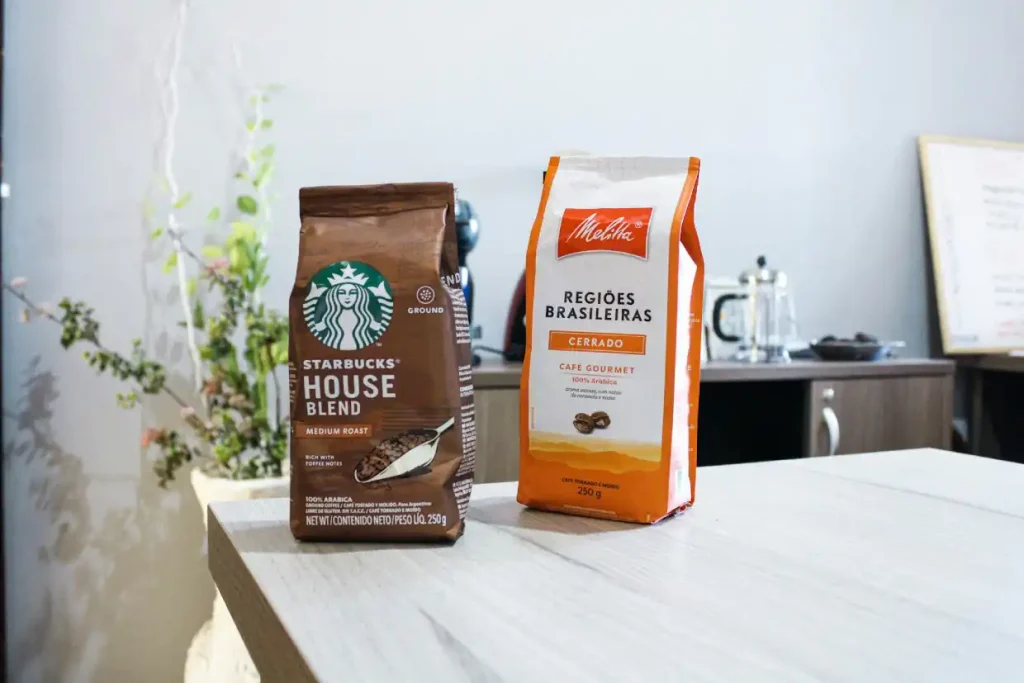
Cost vs Perceived value: What’s worth the extra cents?
For many roasters, the choice between a zipper and a tin tie comes down to cost, but the true equation is more nuanced. You’re not just paying for a physical component, you’re investing in what that closure communicates to your customer every time they open the bag.
On average, adding a tin tie to a kraft paper coffee bag may increase unit cost by 2 to 4 cents (USD) depending on quantity and supplier. A basic zipper, on the other hand, can range from 4 to 8 cents per unit, while premium zipper systems such as double-track or pocket zippers may reach 10 cents or more, particularly for compostable or recyclable formats.
While that difference might seem marginal, especially at smaller scales, it adds up fast in bulk orders. However, what’s often underestimated is the perceived value it brings.
Zippers tend to signal a higher-end product. For retail customers, the tactile experience of a resealable pouch implies freshness, thoughtfulness, and convenience, which are qualities they subconsciously associate with product quality. In fact, many specialty coffee buyers now expect resealable features as a baseline, not a bonus. Failing to offer that can subtly undermine their perception of your brand, regardless of your roast quality.
Tin ties, though more affordable, may come across as basic or artisanal, which can work in your favor if your brand story emphasizes simplicity or heritage. But for premium-positioned products or bags meant to travel farther (e.g., export, e-commerce), tin ties may struggle to meet the functional and emotional expectations of the end consumer.
Ultimately, think of closure systems not as line-item costs, but as touchpoints of customer experience. The right one doesn’t just preserve your coffee, but it also preserves your brand promise.
Sustainability optics: Not just what you say, but what they see?
Sustainability is no longer just a supply chain issue; it’s also a brand perception issue. As a roaster, even if your customers aren’t reading your Life Cycle Assessment reports, they are interpreting your choices through the materials they can see and touch. And nowhere is this more visible than on your coffee bag’s closure system.
At first glance, tin ties may appear more sustainable. They’re minimal, low-tech, and often attached to kraft paper bags, all of which suggests “natural” or “low impact.” But the reality is more complex. Most tin ties contain a thin wire core and are glued onto the bag, making true recyclability or compostability difficult unless removed, which something most end users will not do.
Zipper systems, on the other hand, are often seen as “plastic” and therefore less eco-friendly. But that’s changing. Today, recyclable or compostable zipper films are widely available and increasingly cost-effective, especially in monomaterial pouches (like PE-PE or PLA-PLA structures). The industry is steadily shifting toward zipper systems that align with circular economy principles which are closures that don’t require sacrificing performance for sustainability.
There’s also the question of consistency. A zipper that reseals the bag effectively can reduce food waste, preserve freshness longer, and encourage reuse. Tin ties, while functional, often allow small leaks or fail to hold after multiple uses. From a lifecycle point of view, less waste and longer shelf-life often offset the additional material cost of a zipper.
In short, sustainability is not just about what’s theoretically compostable, it’s about how customers perceive your effort and how your packaging holds up in real use. A poorly resealed bag that results in stale coffee says more about your values than your materials ever will.
For roasters who want to build trust over time, these details matter. Because in the sustainability conversation, credibility is earned not through slogans, but through consistency.
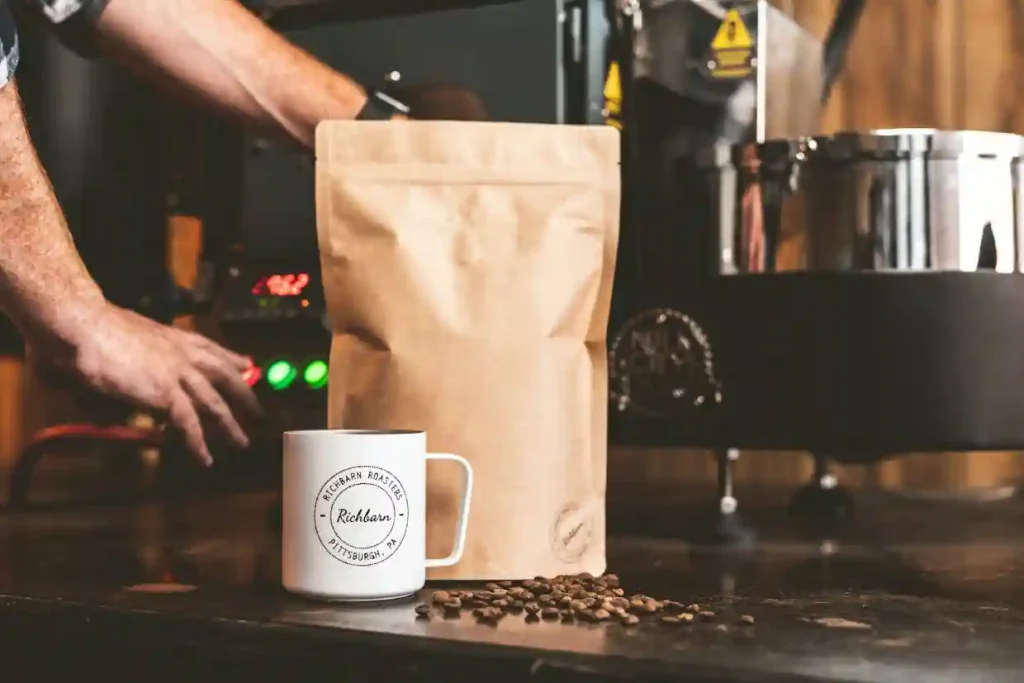
Context matters: Matching seal type to business model
Not every coffee business shares the same operational realities or customer touchpoints, which means the ideal pouch seal will vary depending on your specific business model.
For wholesale-focused roasters, tin tie closures tend to be the practical choice. They are cost-effective, easy to apply in manual or semi-automated packing lines, and provide sufficient resealability for cafes or offices that often consume the coffee quickly after opening. In this context, freshness is preserved through high-volume turnover, and the simplicity of the tin tie becomes a functional advantage.
Retail-heavy or grocery-based brands, however, may benefit more from zipper closures. These customers tend to consume a bag over a longer period, so resealability directly influences the perception of freshness. Zippers also offer a more premium and secure feel, which enhances shelf appeal and reinforces quality, both visually and functionally.
If your business leans into e-commerce or subscription models, zipper closures, especially double or pocket zippers, are often the smarter long-term investment. These customers expect packaging that can stand up to multiple uses over time, and the reseal experience is a subtle yet powerful reinforcement of product quality and consistency.
For coffee shop takeaways or quick-sale retail, resealability may be less important. In some cases, simple roll-top bags or tin ties are sufficient. These are typically consumed within days, meaning the closure plays more of a transport function than a long-term freshness solution.
Lastly, for brands that place sustainability at the heart of their identity, the choice of closure should align with environmental messaging. Some roasters opt for tin ties combined with recyclable or compostable paper materials to reinforce a low-impact image. Others explore bio-based zippers made from compostable materials, ensuring resealability doesn’t compromise sustainability.
Ultimately, your packaging closure should reflect how your coffee is sold, consumed, and remembered. Thinking beyond aesthetics and into real-world application allows your packaging to work smarter, not just look better.
Choosing smart, not just cheap
As a coffee brand, your seal choice can quietly speak volumes, it’s about quality, about care, and about how well you understand your customers’ lives. A zipper may elevate your DTC product into a premium category, while a tin tie might highlight your artisanal ethos in a local market.
The best part? Neither is wrong — but not choosing intentionally is. As more roasters embrace direct-to-consumer models, closure systems will continue to evolve as strategic brand assets.
At FernPack, we work closely with roasters to ensure that every packaging element, from structure to closure, aligns with the fit of the product and its purpose. Whether you’re scaling your house blend to new shelves or curating seasonal lots for loyal subscribers, your seal isn’t just a detail — it’s a signal.



